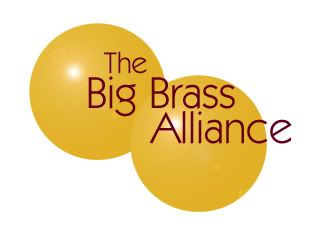DOE: lies, damned lies, and ...
WARNING: Long and wonky educational post ahead. But keep reading!
OK, this isn't exactly breaking news or anything, but in doing some job-related research today I was struck afresh by just how corrupt the Department of Education has become during the reign of George II. Triggering evidence: the "Fact Sheets" posted on No Child Left Behind. Now, as someone who regularly produces and updates higher educational fact sheets, I can tell you that they're supposed to be just that: factual. They're not marketing materials, they're not biased or partisan - they're supposed to just be a (usually pretty dry) listing of the basics about a given institution or project. They typically function as a primary resource for other organizations who want to compare figures or review organizational data. Most colleges and universities have something like this that's available to the general public, and manypublicly-funded research organizations offer fact sheets to update the great unwashed on what they're doing with taxpayer money.
The DOE, however, appears to put a somewhat different interpretation on the factual part of the fact sheet. It's hardly revolutionary at this point to say that NCLB has been one of the most controversial initiatives of Dear Leader's administration. There are widely divergent opinions on how successful it has been, and its efficacy has been questioned by many highly respected political and educational leaders. But you'd never know that from the "fact" sheets! Take, for example, the one titled "No Child Left Behind is Working." (Super factual title. No opinion there, nosirree.) According to the "facts," "The long-term Nation's Report Card (NAEP) results, released in July 2005, showed elementary school student achievement in reading and math at all-time highs and the achievement gap closing." Boy, sign me up! Sounds grrrrrrrrrrrr-eat!
Except that it's not. As EducationNews.org reported back in October, the NAEP results are pretty easy for individual school districts to skew:
... the NAEP allows local school districts to decide which disabled (SD), English Language Learners (ELL), or Limited English Proficient (LEP) students' scores can be excluded from the data. The exclusion rates vary by states. Pulling those students' scores out of a state's overall results can definitely change the way a state is ranked in the final NAEP results.
No kidding. Take, for example, this comparison of the exclusion rates for California and Texas in the 4th Grade Reading category:
In 1998 the national exclusion rate was 7% . California's exclusion rate was 14% ; Texas' exclusion rate was 13% . In 2002 the national exclusion rate was 7%. California's exclusion rate was 5% ; Texas' exclusion rate was 11% . In 2003 the national exclusion rate was 6% . California's exclusion rate was 5% ; Texas' exclusion rate was 11% . In 2005 the national exclusion rate was 7% . California's exclusion rate was 5% ; Texas' exclusion rate was 11% .
Even a statistical dunderhead like me can look at those figures and realize something isn't quite right. Not only that, but to claim that elementary achievements in reading and math are at an "all-time high" is what we in the industry call "cherry picking the data." In other words, while there may be a purely technical sense in which this is true (though even that depends on how you're measuring achievements, which is a much-debated topic), such a statement is nonetheless highly misleading. You read that and think, great! All-time high! We're number one! America, FUCK YEAH! Or something like that. What you don't think, unless you're a eduwonk, is "compared to what?" or "what are the actual numbers?" Just a little digging will quickly reveal that, as reported by stateline.org, "national test results showed a small gain in math proficiency in the past two years but nearly zero improvement in reading scores since 1992 despite more than a decade of focus on boosting student achievement." In fact, as of the 2005 report,
Only about 30 percent of the nation's fourth- and eighth-graders scored high enough to be considered proficient in reading in 2005, nearly the same average as in any year since state NAEP scores were first reported in 1992. In math, the number of students scoring at grade level rose to 33 percent in 2005 from 30 percent in 2003, compared to only 17 percent in 1992.
So "all-time high" translates into over 2/3 of students are scoring below their grade level proficiency. Not such a pretty "fact," is it?
There's more where that came from - including "fact" sheets on how NCLB benefits African Americans and Hispanics (the really lovely thing about those fact sheets is that they use exactly the same text, just substituting in the appropriate race where applicable. Because, you know, all those non-whites are pretty much the same. Gah.), the "facts" about supporting charter schools (never mind that charter schools have consistently performed poorly in comparison to other public schools), and the "facts" about "investing in what works," a laughable treatise on how NCLB will supercede all other educational assessments by applying "the scientific method" to "ineffective teaching practices and unproven education theories" and usher in the next enlightenment.
All of which pisses me off. Not only because of the sheer, boldfaced propaganda of it, but because it creates and reinforces a cultural environment in which all educators are suspect. But of course, since that environment only hurts the already disenfranchised (and I'm talking here about the individual teachers as well as the students), Dubya and Co. will continue to get away with it.
Update: if you want more evidence of how NCLB is fucking with education, read this excellent post of Azpazia's.





:: ::
::